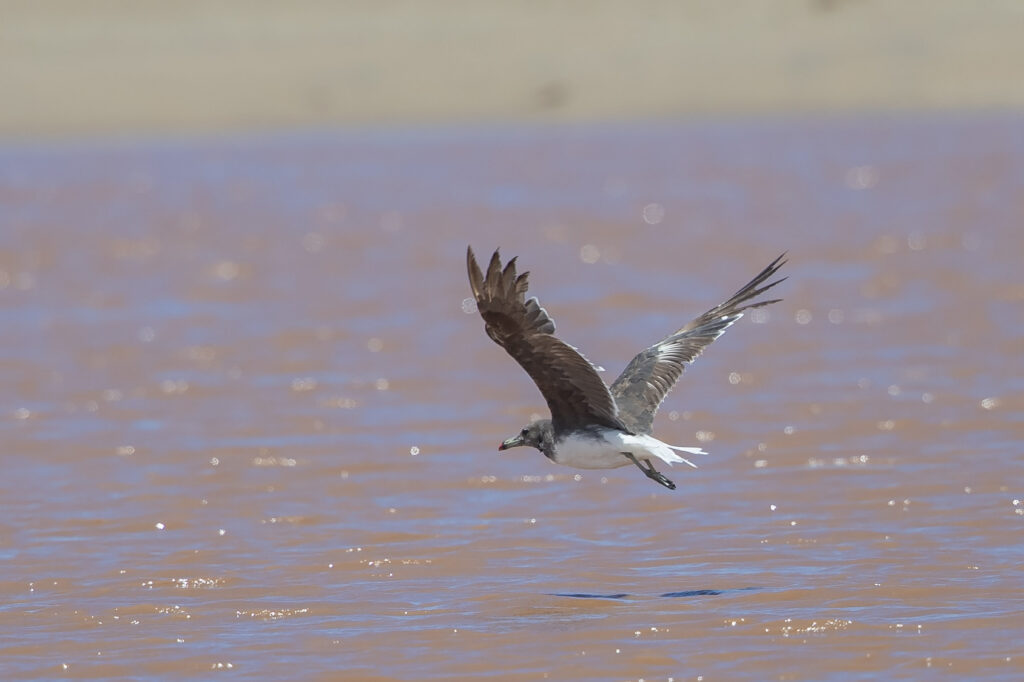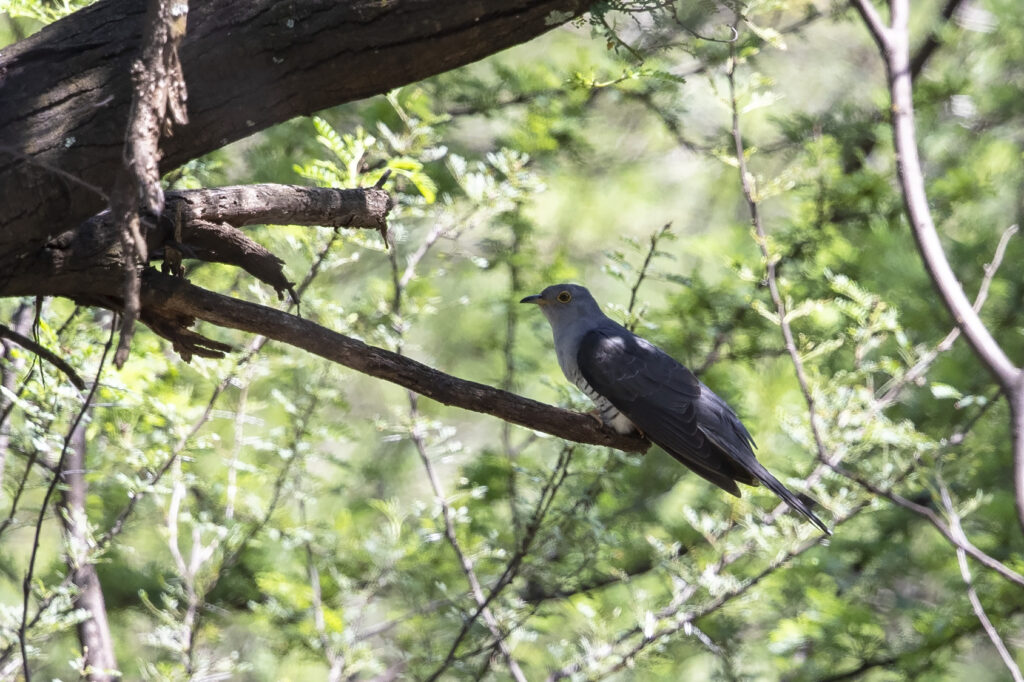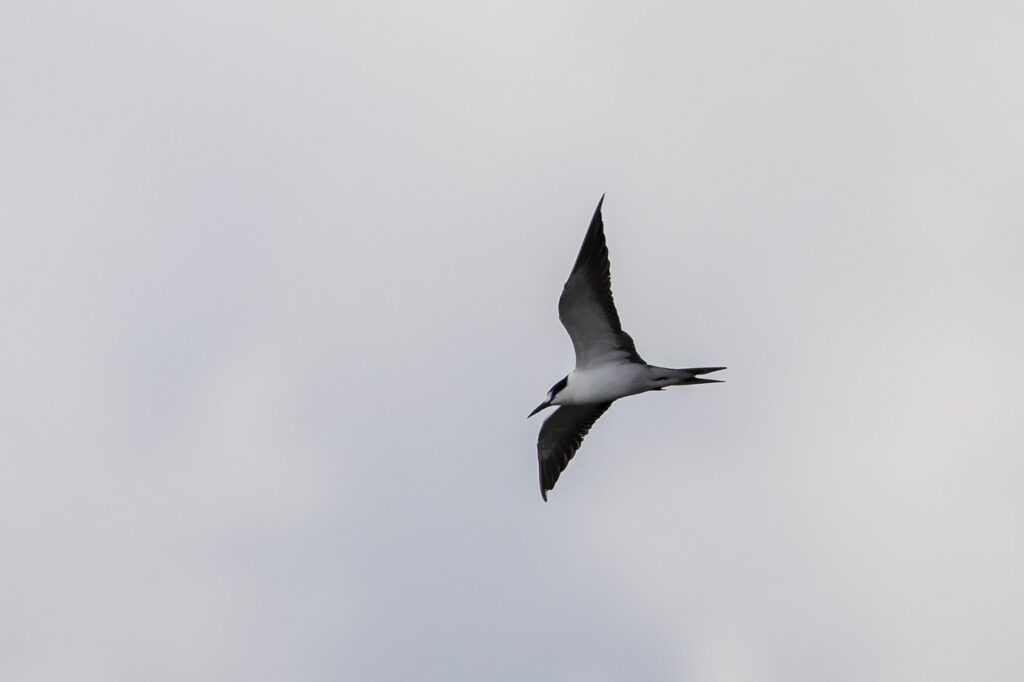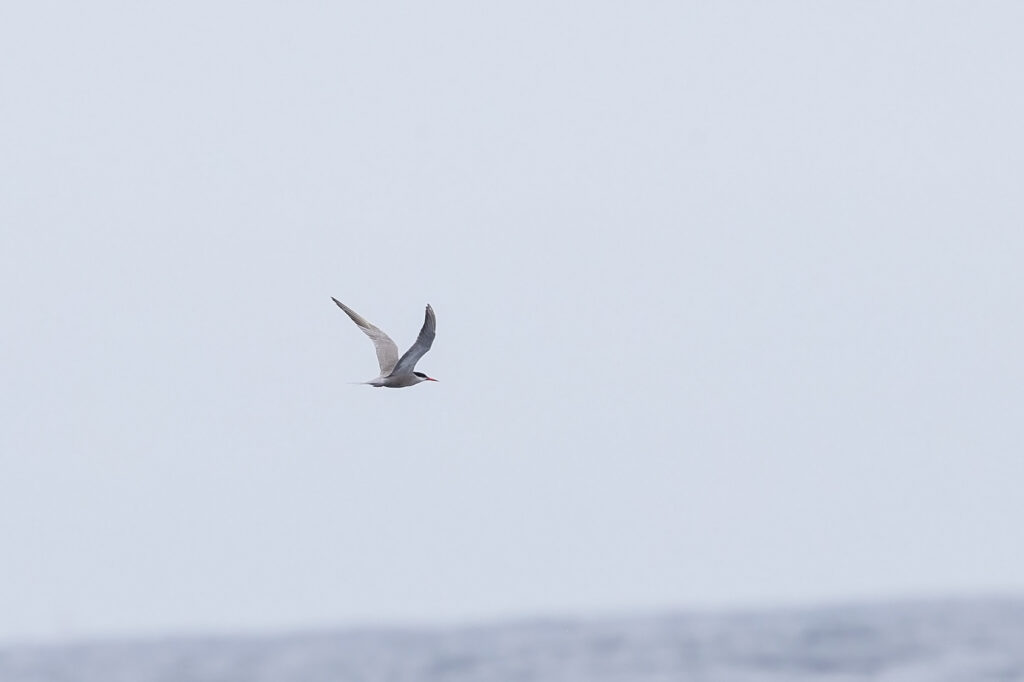
We’re now 2 months into the year, with a pretty explosive start to the rarities scene. On Birding Big Day on 28 November last year, a team in KZN picked up a gull at St Lucia estuary, only reported 5 days later to the disappointment of local birders, who were unable to locate it again. It was the first record for Southern Africa, a species normally found in East Africa up to UAE and across to Pakistan. So just to liven up new year’s day, Michael Wood found and photographed a Sooty Gull at Kei Mouth in Eastern Cape. (Very possibly the same bird that has worked its way down the coast.) This was subsequently twitched by the bigwigs and not so bigwigs of the birding scene, a super start to the year. The numbers of birders present led to the discovery of both Broad-billed and Pectoral Sandpipers at the site.
Add to this were the continued sightings of Madagascan Cuckoo, one (or perhaps two) individuals at Soetdoring Nature Reserve in the Free State, as well as the individual in Hluhluwe Game Reserve. At present, the Soetdoring bird is still on site, almost 3 months later!

White-rumped Sandpiper continued to be seen at Kliphoek Salt pans in Western Cape, with several people twitching the bird, some with the assistance of Learn the Bird’s Etienne Marais.
Another fairly recent addition to our list was Red-necked Buzzard, although the first record was a few decades ago but misidentified at the time. Another good looking adult was discovered in Moremi, Botswana on 9th January.
Red-throated Pipits were discovered at Gaborone Dam in Botswana by Ian White on 15th January, another very special Southern African rarity. Twtiching this was tough for non residents, due to the complexities of cross border travel with the continued COVID resurgence.
A Northern Wheatear on Zaagkuildrift Road on 17th January frustrated several including myself, as it was one of those typical one day wonders – a super bird for the region – we went first thing the next morning and it was not to be.
Collared Flycatcher, rather south and a very rare bird in South Africa was discovered at a private reserve in Limpopo province on 20th January. It stuck around for a few days and was seen by some lucky local twitchers.
Then along came Cyclone Eloise, hitting the Mozambique coast and driving several normally pelagic species inland, in particular numbers of Sooty Terns, seen in North West Province, Gauteng, Mpumlanga and Limpopo. A Great Frigatebird was seen south of Bloemfontein, the locals in Mozambique were getting these pelagic marauders of tern flocks just about as garden birds, with numbers into the hundreds of both Lesser and Great Frigatebirds being seen.

I run pelagics out of Durban, we had a double header on 30th and 31st January, so off I went – summer pelagics are typically a lot quieter than winter, as most of the adult birds are down at their southern breeding islands, but you always have the chance of that special. A couple of birders had distant views of a Red-footed Booby, but that never came closer. I was then chatting to the skipper about a course back to harbour, taking in the line of a trawler we’d been watching – one of the younger birders on board shouted out “dark grey tern in breeding plumage!” – I was downstairs in an instant and grabbed one of the guests suffering from seasickness – WHITE-CHEEKED TERN I yelled – we got out there and got some shots – true as nuts it was a White-cheeked Tern, the first record in the region in over 29 years and the first photographically confirmed record for the region. We didn’t pick it up on the Sunday trip, but bizarelly this rarity decided to pitch up in a tern roost at La Mercy (spotted by Bart Fokkens), and several lucky twitchers were able to get onto it.

We’d had the Sooty Gull as a new first for the region in November, so at the end of January the chaps in the Western Cape got in on the action, with a Crested Honey Buzzard being sighted in Somerset West on 30th January. There was some debate as to the identity, with one of the international experts suggesting it was a hybrid with European Honey Buzzard – this was looked into further, and several other experts very familiar with the species concluding that it was a pure Crested Honey Buzzard, second year bird. The initial doubts were withdrawn and consensus was that we had a full blown Crested Honey Buzzard, a new bird for the region. This prompted me to get myself down there and wait out the vigil at Spanish Farm, eventually getting views on the bird.
A Bridled Tern decided to get in on the action – since the Cape Recife bird, none have been twitchable on the mainland, Thomas Brunneau at Dunes de Dovelas south of Inhambane had a record not so long ago, but now an immature bird was sighted near Polokwane by Jody de Bruyn, chased by several twitchers, but soon disappeared and was not relocated.
A Ross’s Turaco made the journey across the Zambezi again and was seen for a few days late in February near Victoria Falls town, found by the Salmons. This is another rarity that has frustrated many, as even the reliable Taranga Lodge bird would disappear for a day only to return once the twitchers had gone home empty handed.
The Wider Gauteng region has been abuzz with good numbers of Striped Crakes being heard and seen in February, and then Etienne Marais heard Streaky-breasted Flufftails calling in the area. Patience at the bridge and the Platriver area has had several getting sightings of the crake, with a few people being lucky enough to see the flufftails flying up from the flooded wetland. Super records, showing what a good wet season we are currently having.
The last record pitched up on 25th of the month in Kommetjie when a group of 5 White-throated Bee-eaters pitched up in a garden – several searches revealed nothing, but over the last 2 days a few lucky twitchers connected with them in the surrounding area. This is a notoriously difficult bird to twitch, I was unfortunate enough to be one of a few who missed them by minutes (me) and the others by an hour or so…
We look forward to seeing what else the year has to offer!